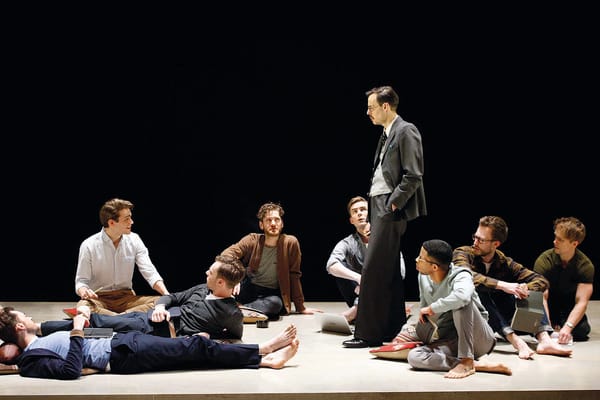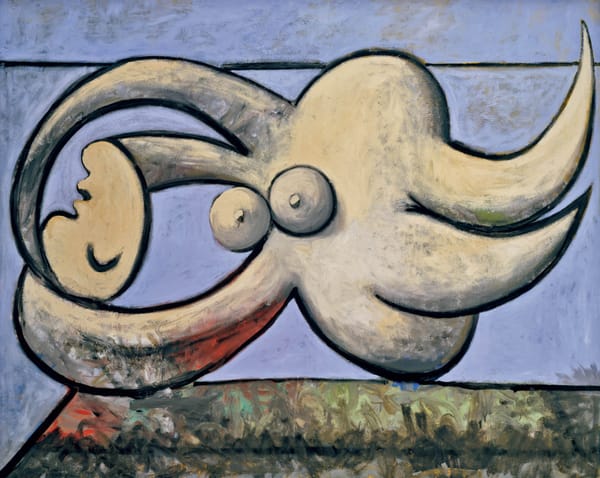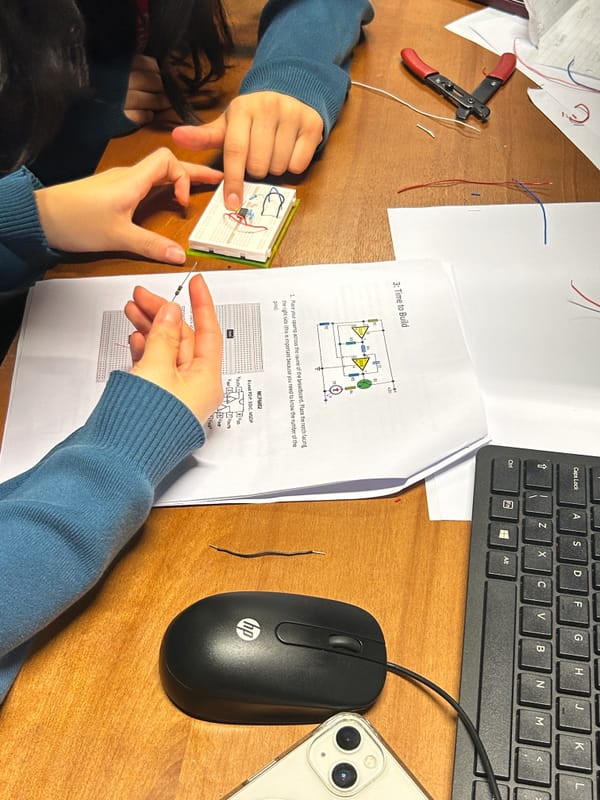Ballet Black: glorious and achingly beautiful
The quietly revolutionary dance company returns to London with a haunting tale of an affair and a queer retelling of A Midsummer’s Night Dream.

This March, Ballet Black, the company consisting entirely of BAME performers, returned to the Barbican with a double bill. Their offering was a show in two halves; neither of these were traditional performances, but rather a showcase of the power of modern ballet.
The first half, choreographed by Cathy Marston, inspired by Can Themba’s short story The Suit was slow, sad, and achingly beautiful. With little else but a couple of chairs, a sheet, and a hanger, the scene of a happy household was set smoothly, with Cira Robinson’s Matilda and Jose Alvarez’s Philemon getting ready for the day. Around them the impressive corps dance with well-honed skills; beginning as furniture, they transfigure themselves into reflections of Philemon and Matilda in the mirror as they mime washing their faces and brushing their teeth. Perfectly in sync, their movements are nothing short of mesmerising. As Philemon left for work and the corps followed, fluidly morphing into passers by in the street, Mthuthuzeli November’s Simon took his place alongside Matilda in bed. As Alvarez danced stage left, Robinson and November performed a sensual pas de deux, bodies moving with captivating slinkiness to the whine of the strings. When Philemon returns to pick up his forgotten briefcase he is greeted with the evidence of his wife’s betrayal. In a hurry to leave, Simon leaves behind his suit. The shock of Philemon’s discovery of the affair is followed by an poignant attempt at reconciliation, but the suit, the manifestation of Matilda’s betrayal, lingers. It haunts the couple, taking the place of an extra guest at dinner, Philemon, unable to forgive, pushes Matilda to dance with the suit at a party as he watches sullenly from the sidelines. The story quickly moves towards tragedy: Matilda, tortured by Philemon’s intransigence, desperate to make amends, attempts but fails to destroy the suit. In an heartwrenching conclusion to the allegorical tale, in the end, the suit destroys her.
In contrast, the second half of the show, Arthur Pita’s Dream Within a Midsummer’s Night Dream was delightfully light hearted. Borrowing from the Shakespeare classic, at the outset it seems to be deeply traditional: three couples in sumptuous tutus begin a routine to Handel. Slowly however the music grinds to a halt and, frozen in place, the dancers succumb to sleep, lit in flickers by a lazily gliding disco ball, as Puck (a magnificent Isabela Coarcy) dressed as a boy scout comes to spirit them away. In an instant the stereotypical, tidy ballet is cut short. When the dancers awake they are in a fantasy realm. The remainder of the performance in which the dancers navigate their new surroundings is accompanied by a chaotic soundtrack. Eartha Kitt’s 'Let’s Do It' opens proceedings. Then Marie Astrid Mence’s Hermia snorts Puck’s fairy dust and sambas to the jaunty tunes of Yma Sumac’s 'Malambo No. 1', pairing off with Sakaya Ichikawa’s Helena in the process. The choreography is quick – with fast footwork and fluid movements. Ebony Thomas’s Lysander and Mthuthuzeli November’s Demitrius seem unconcerned by their loss of former partners and seem perfectly happy in each other’s arms. Jose Alvarez’s Oberon is left pining after them. Meanwhile in an unexpectedly tender segment Titania dances with Bottom to the Barbara Streisand cover of 'Bewitched, Bothered and Bewildered'. A huge-headed Salvador Dali pops up to add to the surreal feel of the colours and eclectic music. Pita’s ode and subversion of to classicism is glorious and ridiculous in equal measure.
In a post-show talk, the founder of the company, the lead of the show, and a host discussed some of the motivations behind putting the company together and the difficulties it has faced. The traditional pink ballet shoe was compared to salmon coloured plasters – a ‘nude’ shade designed to deliver a purpose to the mainstream and simply be put up with by people of colour – the abnormal afterthought. Ballet Black’s rainbow of different nude shades is quietly revolutionary, and illustrates the diversity they are bringing to the industry. Founder Cassa Pancho spoke about her idea to set up the platform for BAME dancers after failing to find a single ballet dancer who was a person of colour in the UK to interview for her university dissertation. That platform now exists, and the company and its dancers are critically acclaimed. The company aims to be obsolete – the aim is its dancers will be role models and encourage more people of colour to get involved in ballet. Once the whole industry is more diverse, a specific platform to give BAME dancer’s an opportunity will not be necessary, opportunities will be provided by all companies.
Despite the company’s progressive mission statement, one particular question in the Q&A about Eurocentric beauty ideals in ballet showed the art has further to go before it can truly be described as inclusive. Ballet Black has unequivocally done wonders for diversifying casts in term of race, but it seems requirements to be a certain height and body shape to be casted are still present. Ballerinas still need to fit a mould, albeit a slightly looser one.
Ballet Black begun their nationwide tour earlier this month, for full schedule see balletblack.co.uk
5 Stars
Where? Barbican When? 17th March








